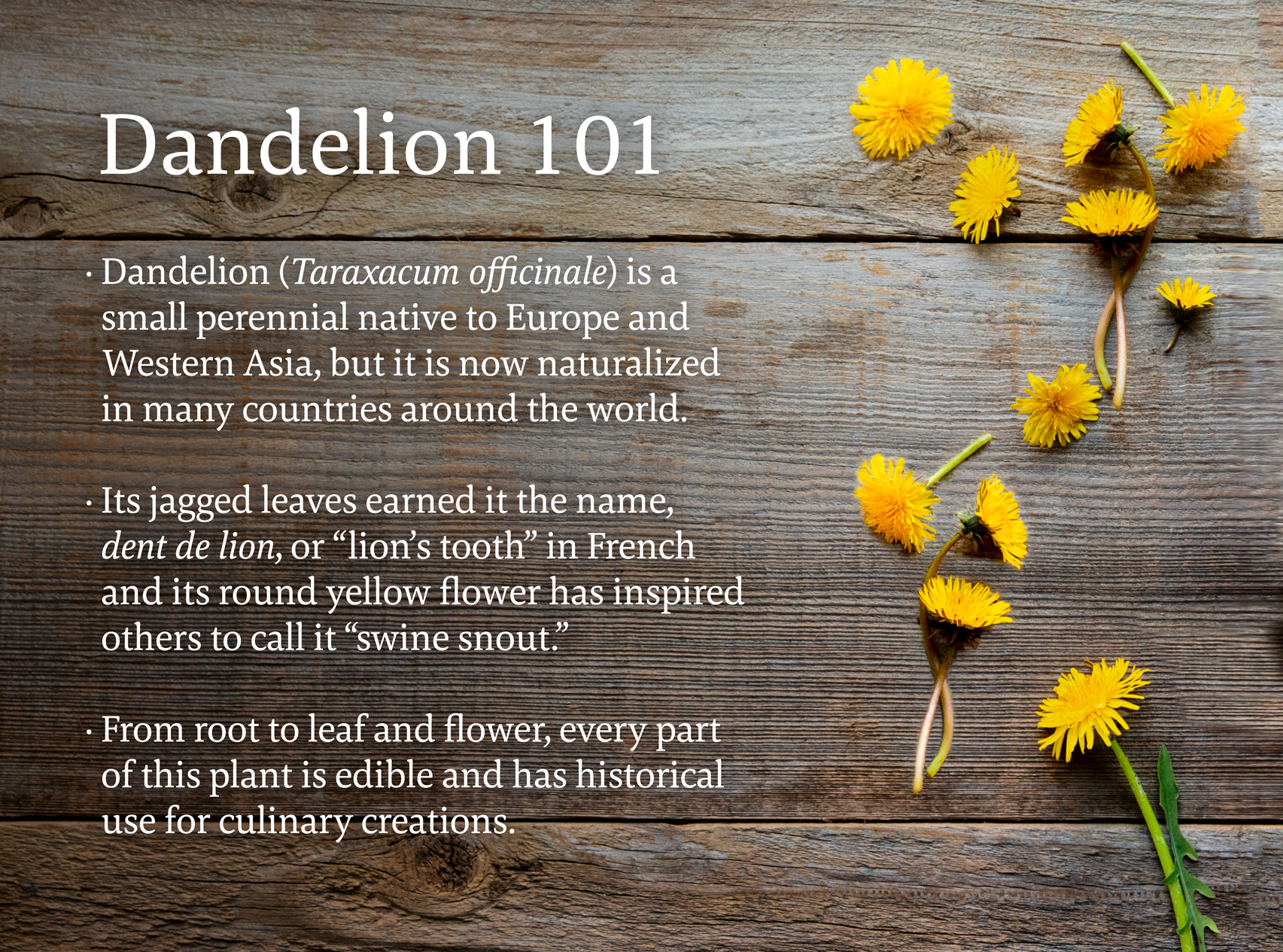Dandelion is undeniably an unsung hero of the plant world. Often overlooked or dismissed as a weed, the sunny dandelion manages to rise above stereotypes as a tasty and versatile plant. From root to leaf and flower, every part of this plant is edible and has historical use for culinary creations. We have employed the flavorful leaves and roots of dandelion into our Dandelion Leaf & Root, Roasted Dandelion Root, and EveryDay Detox® Dandelion teas.
Dandelion is a small perennial from the Asteraceae family that grows well in soils of all types—a quality that makes this plant resilient, adaptable and so widespread. Although a native of Europe and Western Asia, dandelion is now naturalized in many countries around the world. True dandelion can be easily identified from its many Asteraceae look-alikes by the single, non-branching, and hollow flowering stalk that ascends from the center of the dandelion plant. Its jagged leaves earned it the name, dent de lion, or “lion’s tooth” in French, and its round yellow flower has inspired others to call it “swine snout.”
Many lawn enthusiasts have a vendetta against the dandelion, however, dandelion in a lawn is a blessing to the soil, as the deep root bites into the earth, loosening and aerating compact soil, and restoring minerals. It attracts pollinators and earthworms, and inspires the hopeful to make wishes by blowing its delicate puff ball. For these reasons, herbalists, like the bloggers at The Practical Herbalist, have always associated dandelion with, “practical, gentle, and intentional transformation.”

Dandelion’s use in food and beverages has been recorded since antiquity. Like the famous chicory coffee of New Orleans, the roots of dandelion are roasted to make an excellent coffee addition or substitute, claimed by some to be almost indistinguishable from coffee. This tasty root rendition is what inspired us to create our Roasted Dandelion Root tea. The roots have also made their way into many traditional root beer recipes, “beer” being the operative word, as they were fermented and slightly alcoholic. Dandelion root was often combined with nettle leaf and yellow dock root for a tasty brew.
Young dandelion leaves are a pleasantly bitter spring green packed with minerals, which can be harvested and added to salads and pesto, blanched with spinach, or added to soups from spring to early summer. The leaves can also be dried and steeped in hot water with other tender spring herbs like mint, lemon balm, and nettle. Dried dandelion leaf can be enjoyed in our EveryDay Detox Dandelion, and Dandelion Leaf & Root teas.
Resting high above the root and leaf of every dandelion is the oh-so-recognizable yellow flower crown! These bright bursts of yellow have been used in both the past and present to make dandelion flower wine. Requiring thousands of petals, it is recommended to enlist the help of youngsters to bring in this ambitious harvest. Dandelion flowers bloom from early spring through late autumn, making them one of the most consistent and necessary pollen and nectar sources for bees and around 100 other insect species!
Whether you want to enjoy dandelion’s bitter green leaves in your cooking, its flower in homemade wine, its roots in a traditional root beer, or sip it as a morning tea, there are lots of great ways to incorporate this approachable herb into your everyday rituals. The many virtues of this garden variety weed will hopefully have you scouring your lawn for the most robust specimens, as this abundantly available herb is a true gift from nature.





